Places Visited: La Belle, Grandma's Grove RV-Park, Seminole Indian
Reservation, Punta Gorda, Everglades City
We have been staying in
Grandma's Grove RV-Park in La Belle, Florida. We are actually staying in Grandma's
Grove from 26 January through 12 February. We chose Grandma's Grove in La Belle
for a variety of reasons. First of all we are staying in their overflow area that
only costs. $16.14 per-nigh with 15-amp electricity& water----central dump
station, paved interior roads with grass sites in their overflow area N26°
44.214 W81° 28.449'. During the winter 15-amps is all the electricity we need
since we do not need air conditioning. Grandma's Grove does not "reserve"
their overflow sites so people like us that are reluctant to make reservations
can stop in, get on one of their overflow sites and stay as long as we want. All
we have to do is pay more money before 10:00 in the morning. In addition to being
one of the cheapest camping options in this part of Florida Grandma's Grove is
also centrally located to the places Joyce and I like to explore.
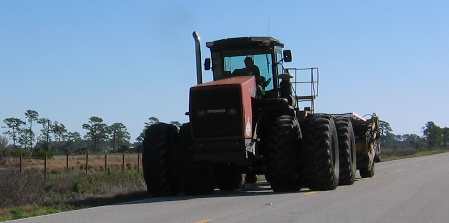
The interior of south Florida is agricultural ground. Huge cattle
ranches, sugar cane, orange groves and huge winter vegetable farms including strawberry
fields. Tractors such as this one are familiar sights.
Wildlife
is varied and visible from nearly every highway. Alligators, a plethora of wading
birds, wild hogs, wild turkey and gopher tortoise are just a few that are visible
to those with a sharp eye.
Alligator in canal
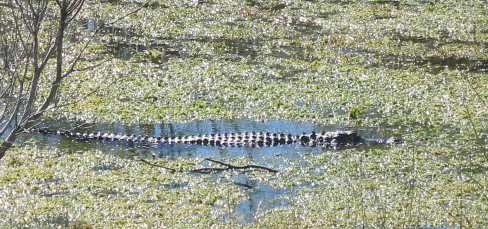
Alligators
like this large one can be seen in weed choked ditches & canals throughout
south Florida.
Immature
white ibis
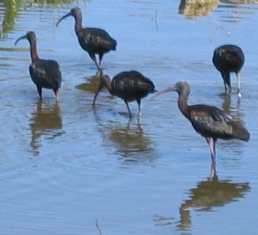
Glossy
ibis can be seen from time to time in south Florida. However white ibis are much
more common.
Common moorhen
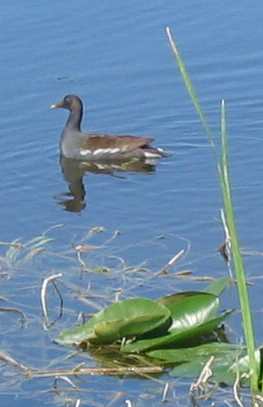
Colorful
moorhens like the one on the left can be seen in most lakes with vegetation.
Wood
Storks
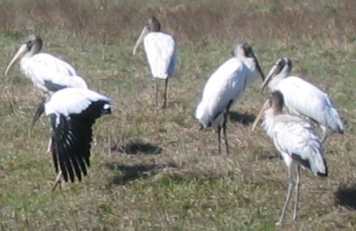
Wood storks like the ones on the right congregate near plentiful food sources.
In this case they are gathered around a canal that is being drained, leaving fish
with less and less water in which to escape and hide. Storks forage for food by
wading with large bills open and swinging from side to side. When they feel a
fish the bill snaps shut. Knowing that it is easy to understand why they like
to find areas where fish are concentrated.
Anhinga
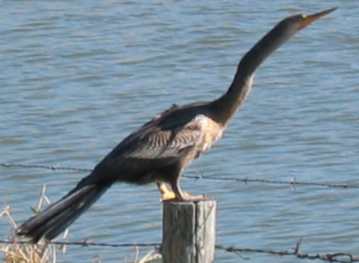
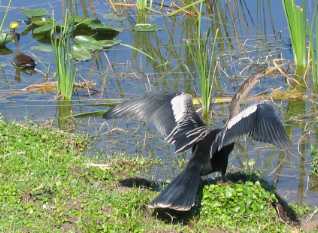
Anhinga
are migratory birds that eat fish exclusively. They can be seen around fresh water
throughout the state in the winter. They are good swimmers with long sharp bills
that they use to spear fish. Unlike most waterfowl their feathers do not contain
oil to repel water. The feathers actually become waterlogged forcing the anhinga
to crawl out of the water and dry off like the one in the picture on the right
is doing. After their wings are dry they can fly once again.
Florida
turkey
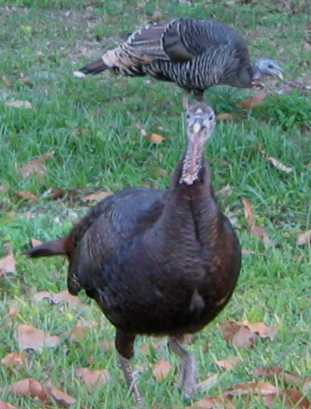
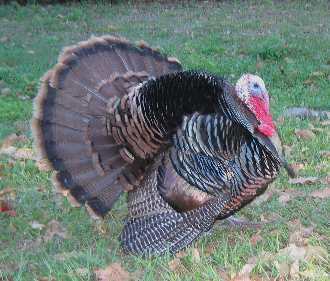
While
water birds are a more common sight turkey can be seen if you keep your eyes open.
The tom on the right was showing off for these hens. Actually, there were a lot
more hens and he wanted them all.
Bald
Eagle
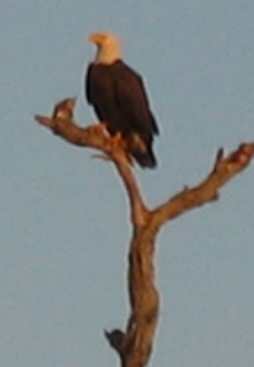
Balk
eagles are becoming more common in Florida. While we do not see them every day
we do see them from time to time. Joyce took this picture near sunset at Ortona
Lock on the Caloosahatchee River 8-miles east of La Belle.
Meadow
lark
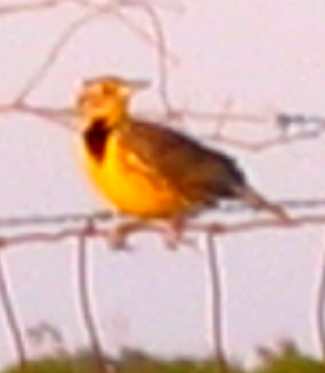
Joyce
spotted this meadowlark with the setting sun shining on him. His golden breast
was enhanced by the glow of the setting sun.
Everglades
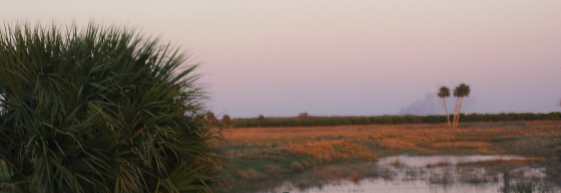
This
is the pasture where we spotted the eagle and that meadowlark. Smoke/steam from
the sugar processing plant in Clewiston can be seen on the horizon.
Wild
pig
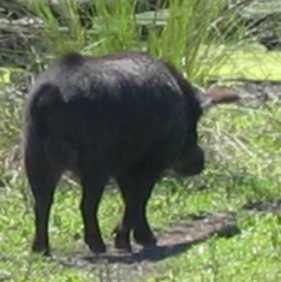
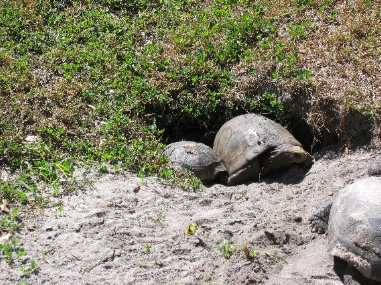
Large
wild hogs, hunters call them wild boar, roam south Florida wilderness areas in
prodigious numbers. For the most part they are nocturnal but occasionally you
can see them in broad daylight like this big boy.
Gopher tortoise are an
endangered species but if you keep your eyes open you can spot their dens. There
were three around this hole.
Cypress dome
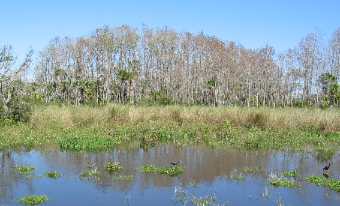
Cypress
domes like the one on the left are a common sight throughout south Florida.
Red
silk floss tree in bloom
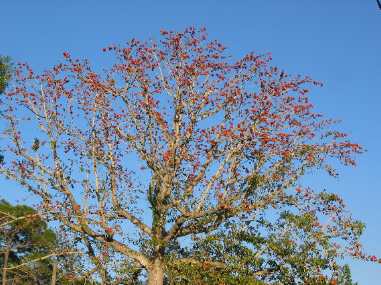
Red
silk floss tree in bloom.
Red Silk Floss
Tree Bloom
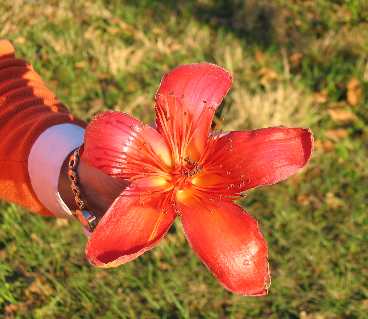
This
is the flower from a Red Silk Floss tree. This "Asian" tree is a true
beauty as you can see from the picture above. They bloom in February on huge trees.
Petals on the huge flowers are thick and waxy. The flowers are full of sweet nectar
that attracts insects birds and animals. We actually found this tree, on the north
side of the bridge in Alva, when we spotted a huge flock of crows feeding on the
flowers. That was several years ago.
Bloom
on red silk floss tree
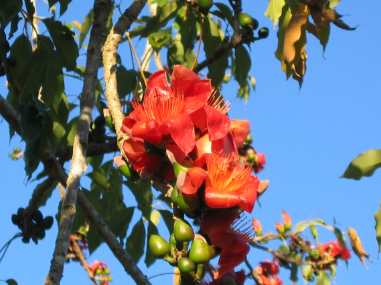
The
bloom on a red silk floss tree is about as spectacular as a flower gets, and there
are so many of them.
Net boat out of
Everglades City
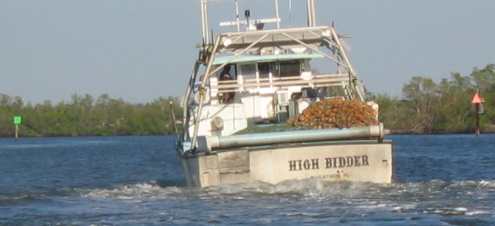
In
the extreme southwest corner of peninsular Florida is the fishing community of
Everglades City, Florida. A familiar sight is the commercial fishing boats like
this one. Most of the boats are stone crab boats. However, this is a gill net
boat. Gill nets are not allowed in Florida waters by constitutional amendment,
therefore this boat must run offshore into Federal waters to fish.
The trees
you see are mangrove. Those trees are on one of the 10,000 islands that you read
about on the western side of Everglades National Park. In fact this boat is traversing
Everglades National Park in order to reach the fishing grounds.
While these
mangroves suffered damage from hurricane Wilma that swept across here late this
summer. The mangroves survived unlike this bingo parlor on the Seminole Indian
Reservation located 90-miles west of Miami and 55-miles west of here in Everglades
City.
Hurricane Wilma damage on Seminole Indian Reservation
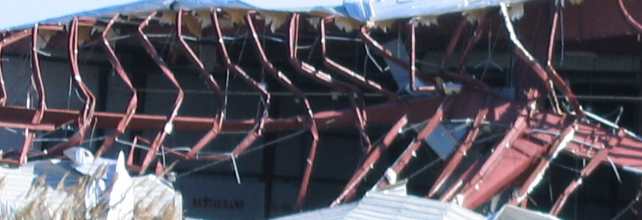
For those of you that think building with more substantial building materials
would somehow solve hurricane damage problems-------think again! Look at what
hurricane Wilma a mere category 3-hurricane did to this metal building. This pic
is only a portion of this huge building that will have to be completely torn down.
The Reservation is obviously having problems with insurance adjusters and or contractors,
construction engineers and architects. The way this side is caved in I would suspect
a problem with the strength of that structural metal.
Until next
week just remember how good life is.
Mike & Joyce Hendrix